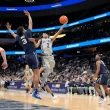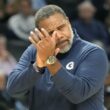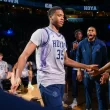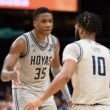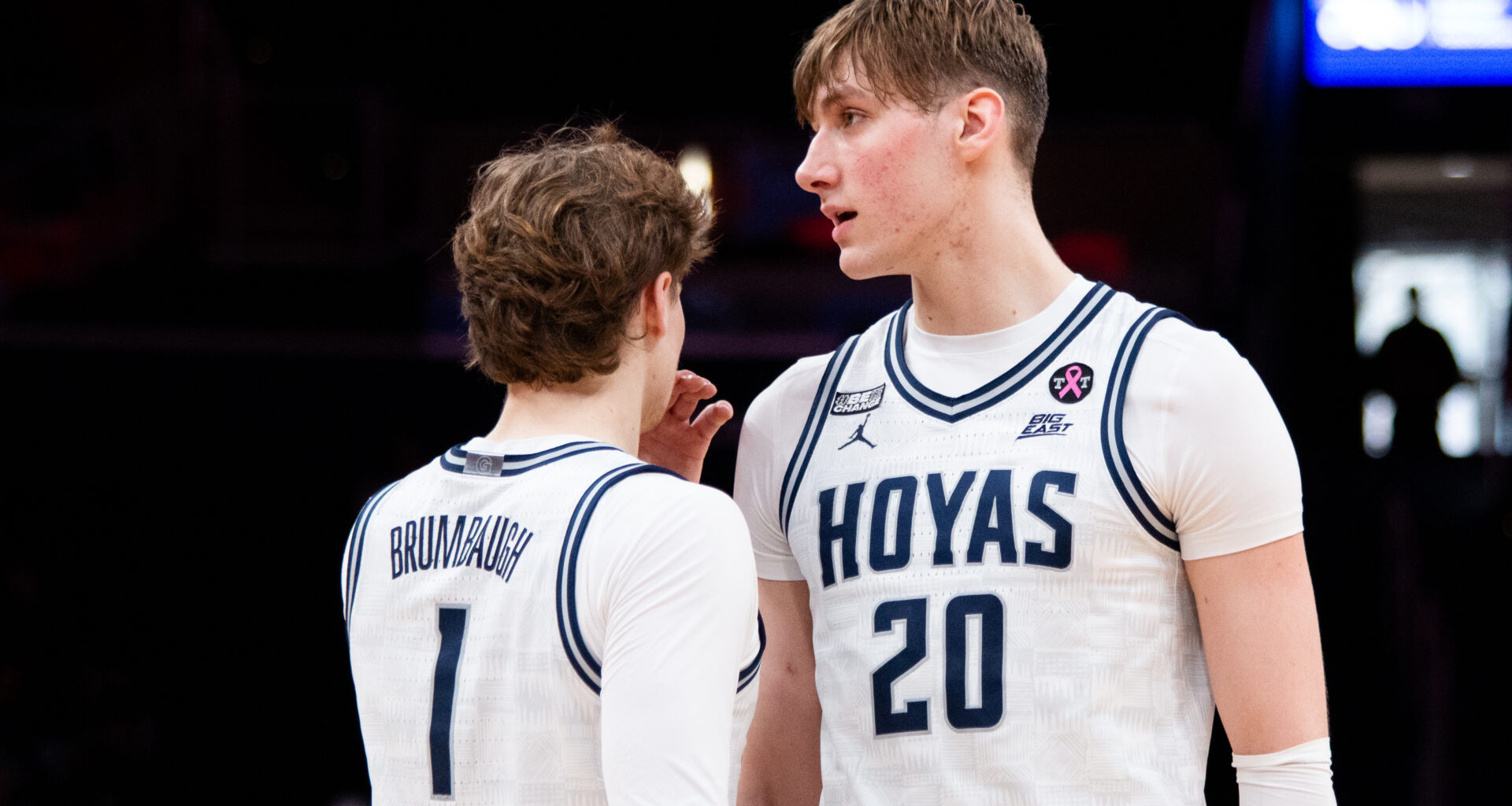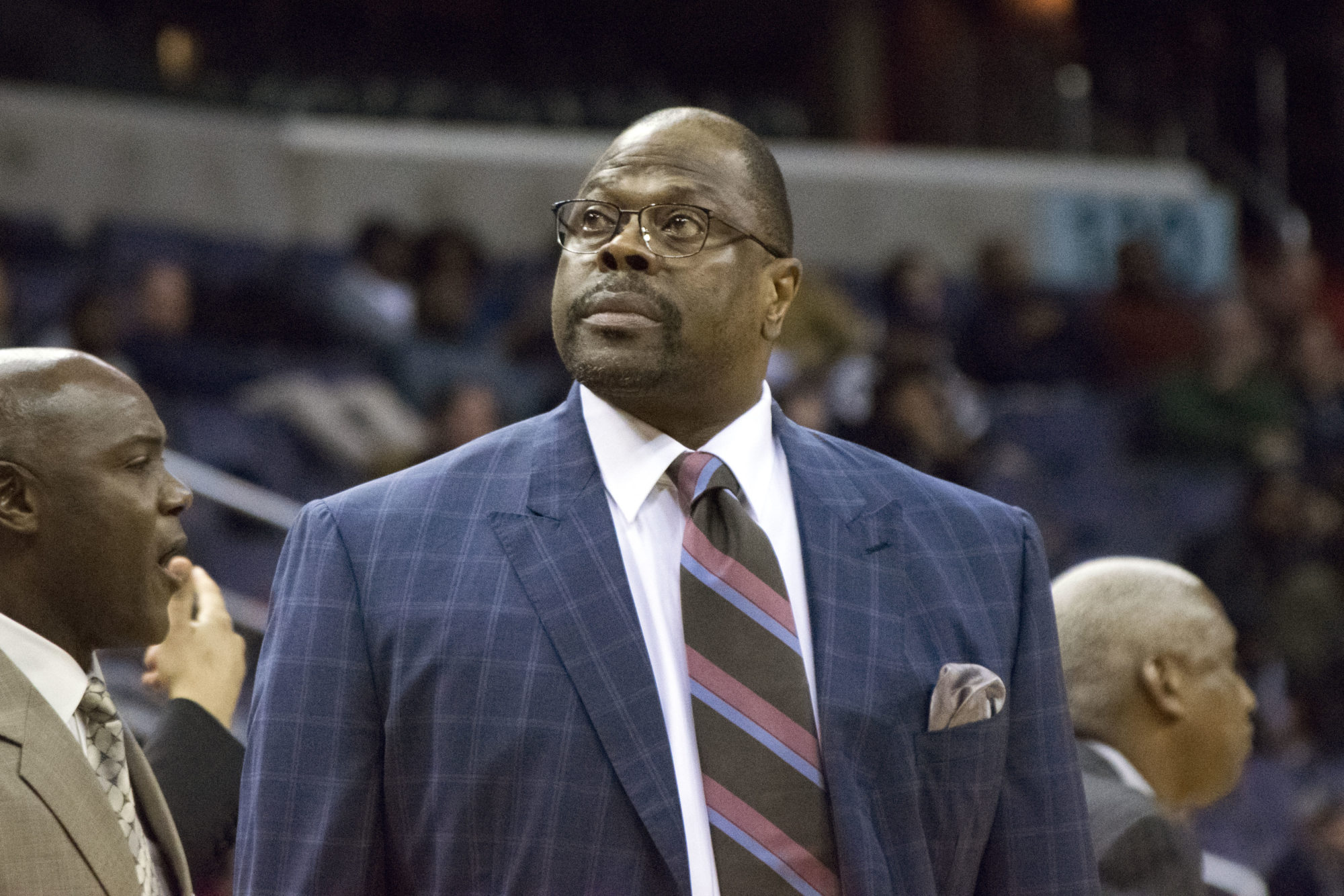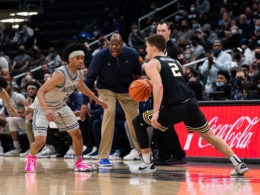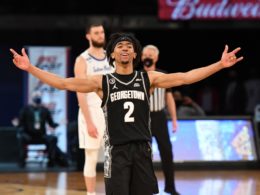To put it bluntly, the Hoyas are struggling. In a rebuilding (or building, as Ed Cooley would call it) year of all rebuilding years, Georgetown has slumped through Big East play to the tune of a 1-10 conference record, the lone win being a nail-biter over lowly DePaul. Rather than jump on here and pile on with paragraphs full of frustration and anger, I took to some of college basketball’s most trusted sources of analytics to see how and where the Hoyas excel and struggle.
Here’s what I came up with:
All statistics are taken from CBBAnalytics, KenPom, and EvanMiya
The Freshmen (Rowan Brumbaugh & Drew Fielder) Deserve More Minutes
With such a thin roster, Georgetown’s youngest players, redshirt freshman Rowan Brumbaugh and true freshman Drew Fielder, have essentially been thrown into the fire this season. Often asked to serve as key rotation players and at times play a major role in creating, the transition for these two could have been smoother, but when you consider the level of competition the team has faced, I’d say that Ed Cooley’s first class of freshmen have done a good job at handling pressure.
To date, Brumbaugh has a +10.7 net rating this season and is only one of two players in the positive (Dontrez Styles, +4.7), but Fielder is third at -1. While neither of the freshmen does much in the way of creating their own shot or spacing the floor, Brumbaugh’s defensive rating is a -15.7, good enough to be in the 98th percentile in the country. Fielder has a -6.5 defensive rating, good enough for the 79th percentile (per CBBAnalytics).
CBBAnalytics and EvanMiya also list the two freshmen as the only net-positive defenders on the roster, and in the team’s last 5 games, the Hoyas are 10.5 points better when Fielder is on the floor (per 100 possessions). With Brumbaugh and Fielder only averaging 21.9 and 15.4 minutes per game respectively, with just ten games remaining on the regular season schedule, perhaps now is the time to increase their roles and see if positive development results.
Supreme Cook is a Monster On The Glass
If you’ve watched any Georgetown game since the team entered conference play, you know how good Cook has been on the glass. But hell, I’m gonna do it anyway. The Fairfield transfer is 17th nationally and first in the Big East in offensive rebounding percentage, pulling them down at a 15.7% clip, averaging 3.8 offensive rebounds per game.
He’s got a 64% True Shooting percentage, but just an 18% usage percentage. Perhaps the Hoyas should look to him even more? Marquette coach Shaka Smart noticeably sent doubles to Cook when he caught the ball down low last weekend, even teasing slides when Georgetown so much as looked his way. Expect UConn to do the same with their tenacious defense.
The chart below gives us a basic look at Cook’s offensive statistics, with the green boxes representing his national percentile, and the numbers in plain text are his actual stats.
Uh, yeah, that’s a lot of green. ‘Nuff said.
Struggling Seniors
Originally intended to be experienced leaders and anchors for this Georgetown squad, grad students Jay Heath and Ish Massoud have by far the two worst net ratings on the team, a -19.4 and a -14.8, respectively. Pairing shooting slumps with serious defensive shortcomings has proven a lethal combination when planning on how the Hoyas could knock off a Big East foe not named DePaul.
Massoud, brought over from Kansas State this season to shore up much-needed frontcourt depth and space the floor as a perimeter threat, has just a 49% true shooting percentage, and despite that number rising to 63.4% in his last five games, it’s only good for the 19th percentile nationally.
Heath’s shooting numbers are unfortunately worse, with the fifth-year senior posting just a 47.6% true shooting number while shooting only 35% from the floor. Additionally, his defensive rating is among the worst in the entire nation, ranking in the 1st percentile with a +16.4, meaning that over 100 possessions, opponents are scoring 16 more points when Heath plays.
Ultimately, efficiency like that just hasn’t translated to wins in such a competitive Big East conference, if anything it has held them back. While Ed Cooley & Co. have been notorious for leaning on their seniors and veterans in key moments, so far this season it has done nothing but hurt the Hoyas.
Jayden Epps Is Even Better Than You Think
Epps, the Hoyas’ lead guard all season, has been the focal point of what feels like every offensive possession when he’s on the floor. EvanMiya credits him with a 2.36 Offensive Bayesian Performance Rating (OBPR), which reflects the offensive value a player brings when on the floor. Meanwhile, his usage percentage hovers around 31%, ranking him 5th in the nation among all high-major teams, behind just Notre Dame’s Markus Burton, Texas A&M’s Wade Taylor, Purdue’s Zach Edey, and Virginia Tech’s Sean Pedulla. That’s pretty solid company if you ask me.
What’s most impressive about Epps though, despite his defensive struggles, is his ability to be efficient despite the insanely high usage rate. Epps has a TS percentage of 53.5% and an assist rate of 30.5. The below graph shows that despite being the only player in the entire Big East with a usage rate of above 30%, Epps is still able to shoot at roughly average efficiency, a remarkable feat when you consider just how badly the team has struggled in certain contests.
The staff will undoubtedly look to bring in a facilitator next season to run next to Epps as the lead guard, bringing the ball up the floor and handling pressure, allowing the Illinois transfer to create off the dribble and be less worried about literally doing everything.
Potential Lineup Combos
While the two freshmen happen to have the two best defensive and two worst offensive outputs, pairing them with the Big East’s leading scorer in Jayden Epps and incumbent starters Dontrez Styles and Supreme Cook may not be the worst idea. It wouldn’t give the Hoyas much in the way of frontcourt depth, leaving just Ish Massoud should either of the bigs enter foul trouble, but in 20 minutes played together, that lineup produced a +/- of +5, a net rating of +13.4, and a DRating of 86.1, which would place them in the 99th percentile.
Should Cook enter foul trouble as a traditional 5, against smaller opponents, Ed Cooley could look to roll small. A lineup of Epps, Brumbaugh, Bristol, Styles, and Fielder had a +/- of +3 and a net rating of +36 in just 4 minutes played together. Such a lineup would not prove to be effective against the likes of UConn and Donovan Clingan, but against teams without a massive paint presence, it could work.
Ultimately, with the season essentially over in regards to postseason play, I’m interested to see if Ed Cooley gives the freshmen a longer leash on the floor for the sake of growth and development. If the staff gets creative with matchups and lineup combinations because with just a month to go in the season, there are some I’d like to see more of.
